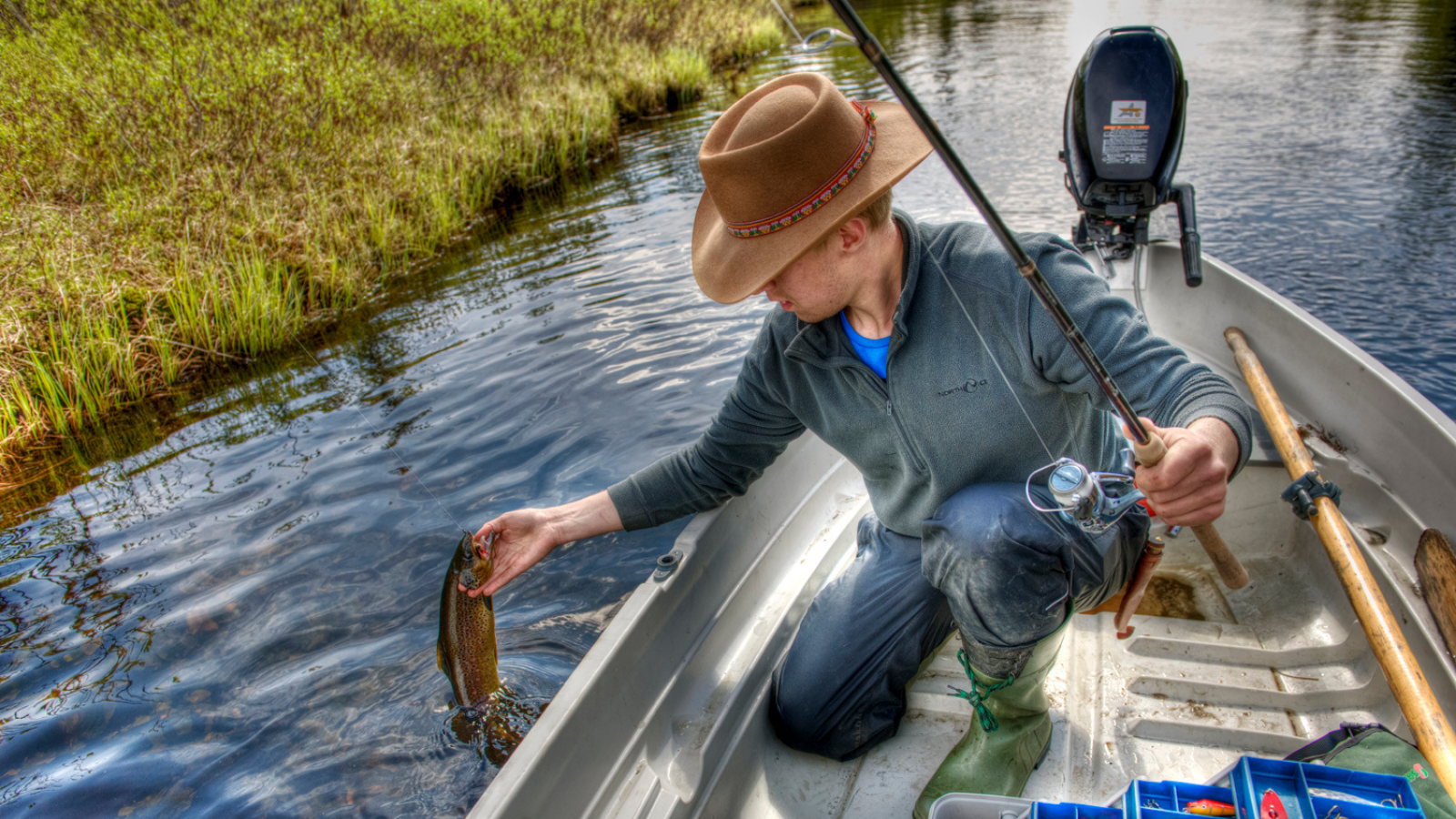January 5, 2021
Our environmental-impact monitoring includes monitoring fish stocks by means of various methods. According to the monitoring results, the neighboring Seurujoki’s fish stocks are abundant and the fish are safe to eat.
Among our monitoring methods are fishing logs, fishing surveys, sampling from electric fishing, determination of the origin of the trout present, fish-egg incubation tests, assessment of the usability of the fish, and evaluation of the efficacy of fulfilling our fish-population obligations and of related measures.
Fishing logs are kept on a continuous basis, while the other measures are carried out every three years. The results are reported to the supervisory authority, Lapland’s Centre for Economic Development, Transport and the Environment.
The Seurujoki’s fish are safe to eat
Today, there is relatively little fishing of the Seurujoki, though the river has abundant fish stocks. We release about 5,000 one-year-old trout into the Seurujoki each year, and we monitor the population via electric-fishing sampling and fishing logs. Most trout caught by people fishing here have had an adipose fin, indicating that the fish reproduce in the river.
Usability tests show that fish caught in the Seurujoki are safe for human consumption. The results of a study conducted by consulting firm Rambol indicate that the mercury, lead, and cadmium content of the trout and grayling caught in the Seurujoki remain clearly below the EU’s maximum limits for foodstuffs.
In 2020 too, the trout caught in the river near our water-intake point for usability tests had adipose fins. The test results will become available in early 2021.
Fishing logs clarify the picture
Fishing logs are used by the Kittilä mine to monitor the basic levels of fish stocks. The fishing logs kept by those fishing here provide us with information on the species caught and on changes in volumes. This information helps us spot any long-term changes in the size of the fish population.
On the log forms, those fishing note their site-specific catches and fish volumes daily. Via the forms, they can also report any other observations, such as contaminated traps or changes in the flavor of the fish. Fishers have kept logs related mainly to the Seurujoki and the Loukinen since 2006.
Fishing surveys yield valuable data
Fishing surveys are carried out via postal questionnaires. Questionnaires are sent to all permanent and holiday residents in the Kuivasalmi, Kiistala, Lintula, and Rouravaara areas. The survey focuses on the number of people fishing and their catches at species level, but it also features questions on factors that hinder fishing.
Electric-fishing sampling supplements the results
Electric-fishing sampling is performed along the Seurujoki and Loukinen in nine test areas. Species-specific densities and biomass per unit area are calculated from the data. The salmon are measured separately, and scale samples are taken when necessary for determining the age of the fish.
In conjunction with sampling, the test site’s area, water depth, currents, riverbed conditions, flora, and algae and sludge layers are determined. In addition, pictures are taken of the fish.
We determine the trout’s origin
Under the conditions of our environmental permit, we are obliged to release young fish into the river. These young trout are marked by cutting of their adipose fin. This enables us to determine the proportions in which released and wild fish contribute to each sample.
Incubation tests measure the eggs’ viability
Under our environmental permit, we must also monitor the impact of wastewater on the incubation of eggs by fish that spawn in the fall (trout).
The egg-incubation test is performed in January or February when the developing eyes become visible in the eggs and the spawn can withstand being transported and handled. In the incubation testing, spawn from the Ounasjoki’s river trout are incubated in incubation boxes at the bottom of the river.
We check the usability of the fish as food
Our fish-population monitoring also covers assessment of the usability of the fish and analysis of their heavy-metal content. The metal content of fish is a good indicator of environmental conditions with regard to metals. Because heavy metals are carried upward in the food chain, metal concentrations in edible fish are measured for making sure they remain below the maximum levels set.
Our goal is to analyze the Seurujoki’s most commonly used edible fish: trout, grayling, and pike, along with perch. The fish are measured and weighed, and the numbers of both released and wild fish are recorded. Where applicable, the results are considered in light of the environmental quality standard pertaining to mercury concentrations in the muscle material of perch and herring and compared to the EU-specified maximum levels for mercury, lead, and cadmium.
The measures’ efficacy gets evaluated
Under the conditions of our environmental permit, we must monitor the effectiveness of the measures we take for the aquatic environment and of the annual fishery fee we pay. We perform this monitoring via such measures as the electric-fishing sampling, fishing logs, and fishing surveys.


